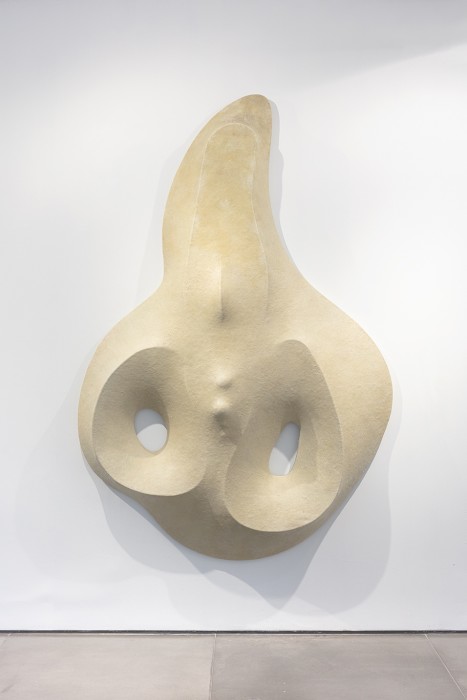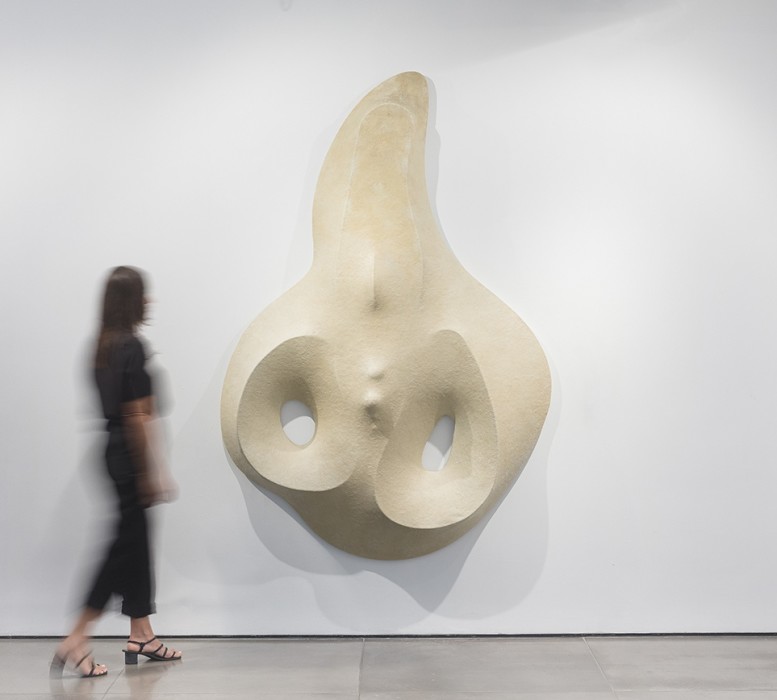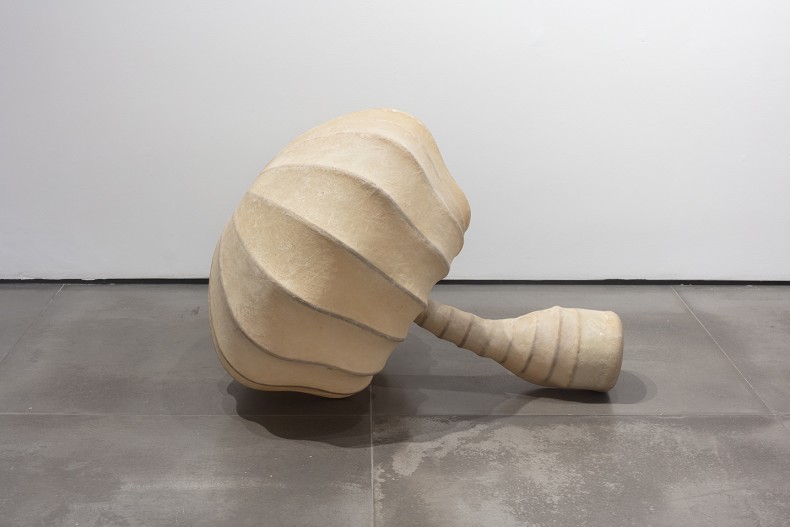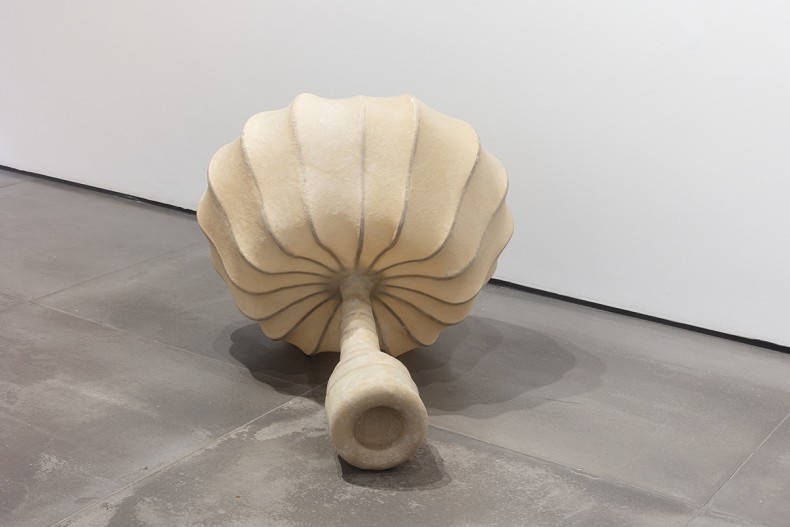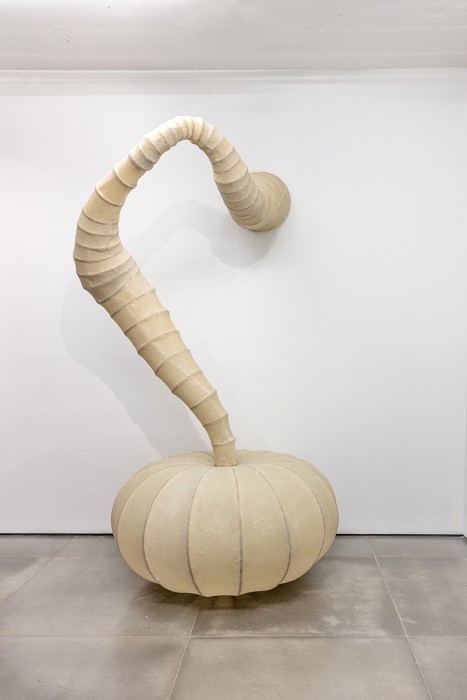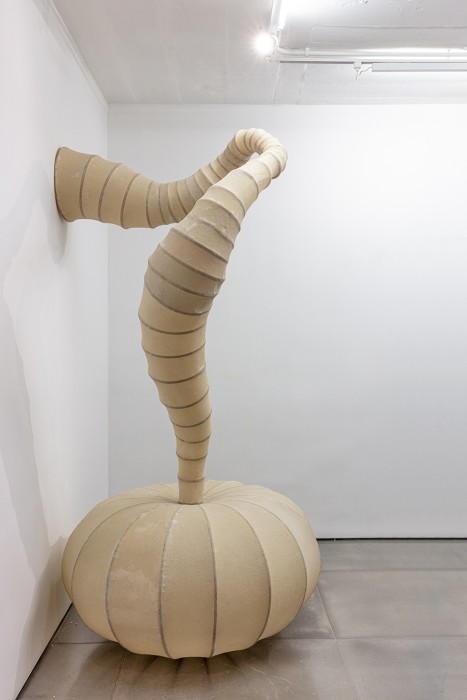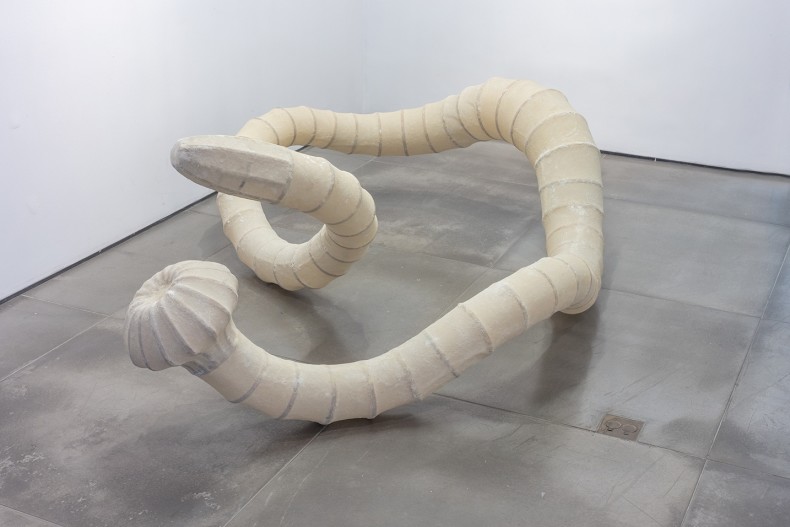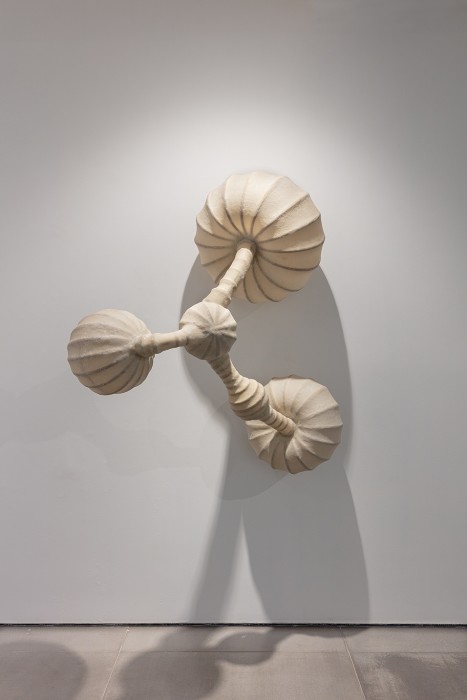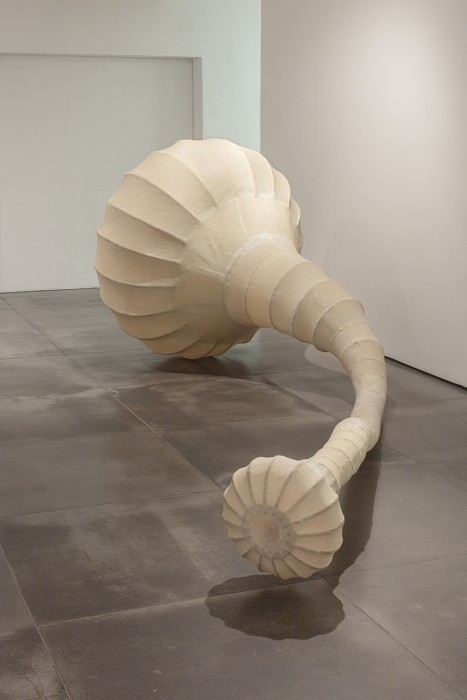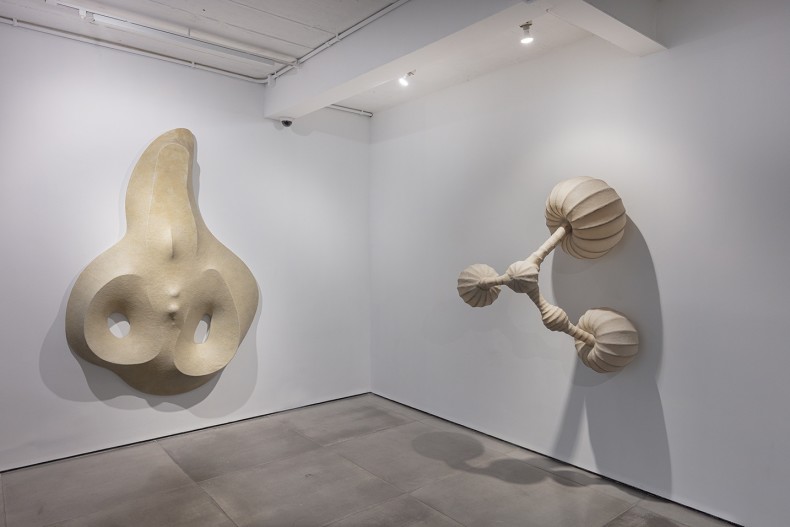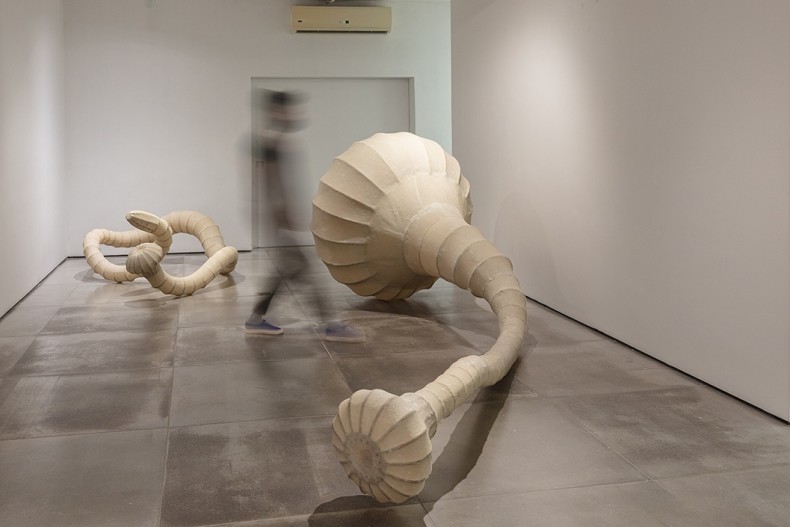Nara Roesler is pleased to announce Angelo Venosa’s solo exhibition Quasi at the gallery's space in Rio de Janeiro, Brazil. The exhibition celebrates the artist’s long trajectory and career, showcasing his ability to equally commit to both, experimentation and technical rigor.
In this exhibition, Venosa presents a selection of his most recent works, produced from 2018 onwards. The sculptures embody and further elaborate the main characteristics of the artist’s practice, entwining elements from his early works, such as forms, materials, and procedures, with contemporary research and concerns. The majority of the pieces presented are made of materials such as wood, fabric, and fiberglass through which Venosa elaborates sculptures that highlight the tension between the organic and the abstract. The works evoke the shape of fossils, fragments of, or entire bodies of unknown beings, inviting us to reflect on different temporalities—the past, the present, and the future—, as well as on survival and death. As has been characteristic throughout Venosa's practice, the sculptures’ materiality suggest both, familiarity and strangeness, at once palpable through its materiality and mysterious for escaping recognition.
Originally from São Paulo, but based in Rio de Janeiro since the mid-1970s, Angelo Venosa was a prominent participant in the city's effervescent artistic scene that became known as 'Generation 80.’ Venosa is proof that the group's production reached beyond the language of painting. According to the curator of the exhibition, Daniela Name, the group ‘had a common desire to recover the affective connection with representation and images, migrating their political interests to a subjective and intimate sphere, which coincides with an expansion of the narrative freedom achieved in the country’s process of re-democratization.’
Access the Online Viewing Room.
Angelo Venosa's works are notably part of important private and institutional collections, such as the Museu de Arte do Rio (MAR), the Pinacoteca of the State of São Paulo, and the Museo Nacional Centro de Arte Reina Sofía ( MNCARS), in Madrid, as well as being present in several public spaces, Baleia (1989), at Leme beach—just one of the numerous installations scattered throughout Brazil—whereby the artist establishes dialogues with, and transforms, the environment they inhabit; all of which serve as a testament to the artist's prolific career.
